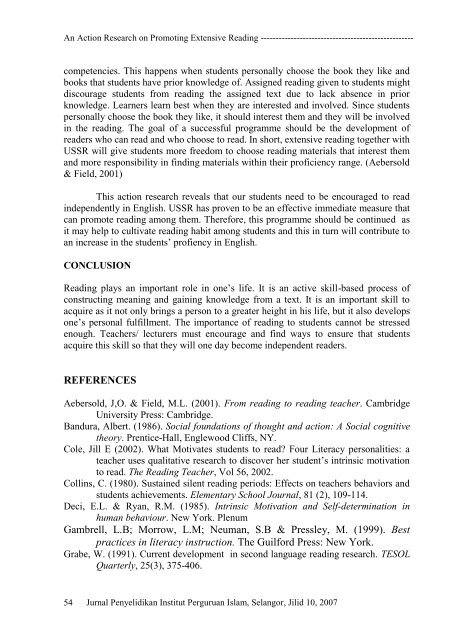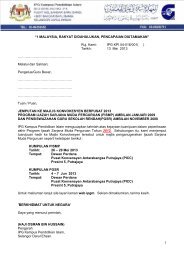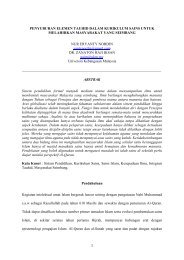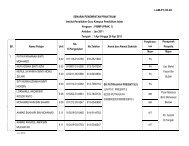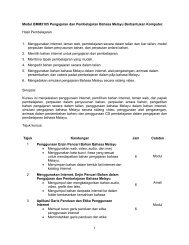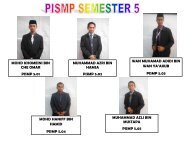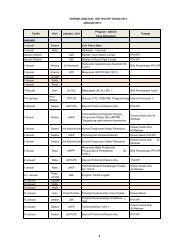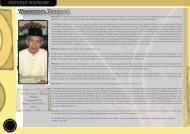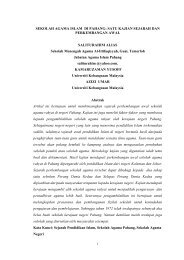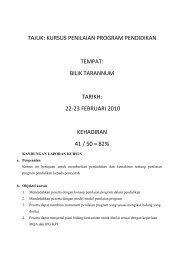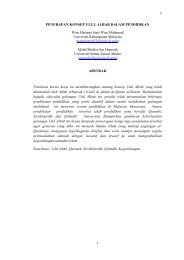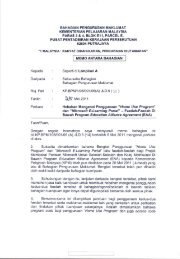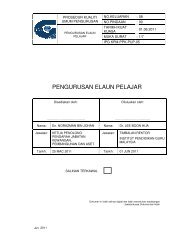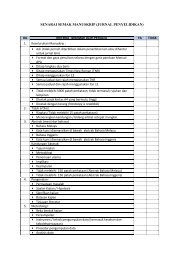Tahap Efikasi Pembentukan Sahsiah Murid Di Kalangan Pelajar KPLI
Tahap Efikasi Pembentukan Sahsiah Murid Di Kalangan Pelajar KPLI
Tahap Efikasi Pembentukan Sahsiah Murid Di Kalangan Pelajar KPLI
You also want an ePaper? Increase the reach of your titles
YUMPU automatically turns print PDFs into web optimized ePapers that Google loves.
An Action Research on Promoting Extensive Reading ---------------------------------------------------competencies. This happens when students personally choose the book they like andbooks that students have prior knowledge of. Assigned reading given to students mightdiscourage students from reading the assigned text due to lack absence in priorknowledge. Learners learn best when they are interested and involved. Since studentspersonally choose the book they like, it should interest them and they will be involvedin the reading. The goal of a successful programme should be the development ofreaders who can read and who choose to read. In short, extensive reading together withUSSR will give students more freedom to choose reading materials that interest themand more responsibility in finding materials within their proficiency range. (Aebersold& Field, 2001)This action research reveals that our students need to be encouraged to readindependently in English. USSR has proven to be an effective immediate measure thatcan promote reading among them. Therefore, this programme should be continued asit may help to cultivate reading habit among students and this in turn will contribute toan increase in the students‟ profiency in English.CONCLUSIONReading plays an important role in one‟s life. It is an active skill-based process ofconstructing meaning and gaining knowledge from a text. It is an important skill toacquire as it not only brings a person to a greater height in his life, but it also developsone‟s personal fulfillment. The importance of reading to students cannot be stressedenough. Teachers/ lecturers must encourage and find ways to ensure that studentsacquire this skill so that they will one day become independent readers.REFERENCESAebersold, J,O. & Field, M.L. (2001). From reading to reading teacher. CambridgeUniversity Press: Cambridge.Bandura, Albert. (1986). Social foundations of thought and action: A Social cognitivetheory. Prentice-Hall, Englewood Cliffs, NY.Cole, Jill E (2002). What Motivates students to read? Four Literacy personalities: ateacher uses qualitative research to discover her student‟s intrinsic motivationto read. The Reading Teacher, Vol 56, 2002.Collins, C. (1980). Sustained silent reading periods: Effects on teachers behaviors andstudents achievements. Elementary School Journal, 81 (2), 109-114.Deci, E.L. & Ryan, R.M. (1985). Intrinsic Motivation and Self-determination inhuman behaviour. New York. PlenumGambrell, L.B; Morrow, L.M; Neuman, S.B & Pressley, M. (1999). Bestpractices in literacy instruction. The Guilford Press: New York.Grabe, W. (1991). Current development in second language reading research. TESOLQuarterly, 25(3), 375-406.54Jurnal Penyelidikan Institut Perguruan Islam, Selangor, Jilid 10, 2007


